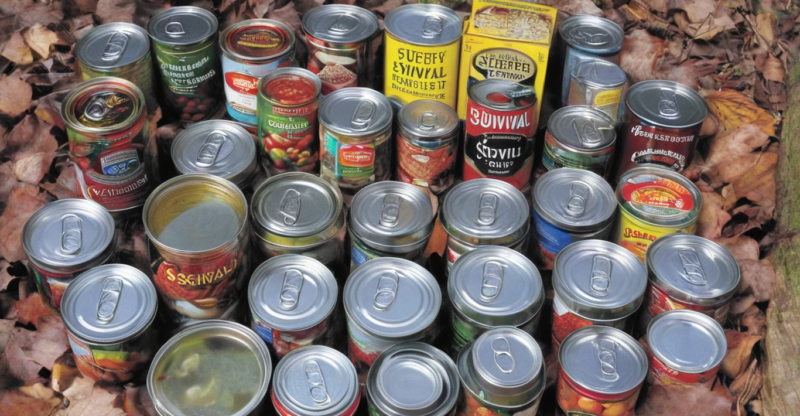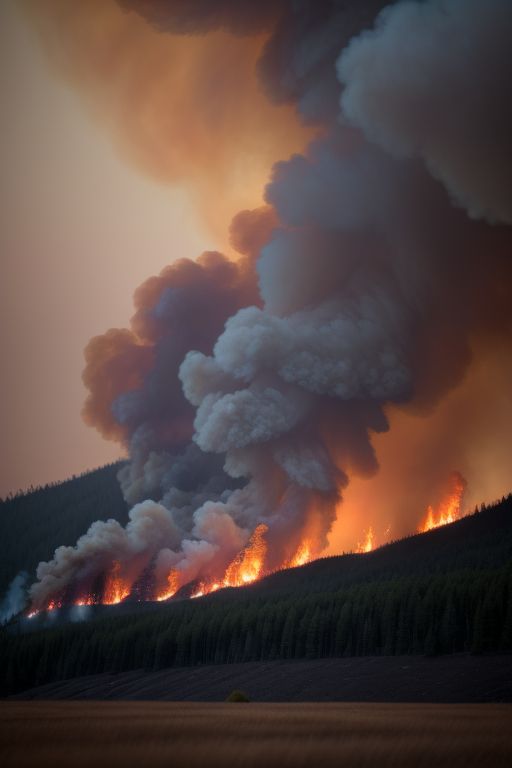Weathering a Tropical Storm: What you will need! – Surviving the Fury of Nature
Bracing for a tropical storm? You’ve landed at the right place.
Understanding the essentials to weather a tropical storm is crucial for your safety and survival. From emergency kits to securing your home, our guide covers it all, providing you with the knowledge you need to face the storm head-on.
Each section of our guide delves into specific areas, ensuring you’re prepared for every possible scenario. Stay with us as we navigate through this storm together, providing you with the necessary tools and tips to keep you and your loved ones safe.
Get ready to empower yourself with the right information, turning the daunting task of weathering a tropical storm into a manageable feat. Let’s dive in.
“What supplies do I need?”
When weathering a tropical storm, your safety is paramount. One of the essential items you will need is a disaster supply kit. This kit should include non-perishable food and water to sustain each family member for at least three days. Also, consider including a manual can opener, as electricity might be unavailable.
- Medications: Keep a supply of all necessary prescription and non-prescription medicines.
Emergency tools, such as a battery-powered weather radio, flashlights, and extra batteries are other necessary items. A fully-stocked first aid kit should also be included, along with personal hygiene items.
In anticipation of potential evacuation, have a go-bag ready. This bag should contain important documents, cash, and necessary personal items. Remember to pack items for children and pets if applicable.
During a tropical storm, your home may experience power outages. Therefore, having alternative charging methods for your devices, such as portable power banks, can be extremely beneficial.
Keeping your home safe is also important. Storm shutters or plywood can protect your windows from breaking due to high winds. Sandbags can help prevent flooding in your home.
Lastly, ensure you have a communication plan in place. All family members should know who to contact and where to meet in case of separation.
Being prepared with the right supplies can significantly increase your chances of safely weathering a tropical storm.
“How to secure my home?”
When a tropical storm is on the horizon, securing your home becomes a top priority. One of the first steps is to fortify your windows and doors. You can do this by installing hurricane shutters or using marine plywood to cover them.
Next, consider securing your roof. This can involve installing hurricane straps or clips to reduce roof damage. Also, inspect your yard. Secure loose items that could become projectiles in high winds, such as patio furniture and grills.
- Check your home’s drainage system
- Clear all gutters and downspouts
- Ensure water can flow away from your home
Furthermore, trim any overhanging tree branches that could potentially damage your home. Remember to also secure your garage door as they can be vulnerable to high winds.
Lastly, consider investing in a generator for power outages. Ensure it’s installed by a professional and follow safety guidelines when using it.
By taking these steps, you can significantly increase your home’s ability to weather a tropical storm. It’s all about being prepared and taking proactive measures to protect your property from potential storm damage.
“Should I evacuate or stay?”
The decision to evacuate or stay during a tropical storm largely depends on your location and the severity of the storm. If you live in a flood-prone area or near the coast, evacuation is often the safest option. Local authorities will typically issue evacuation orders if the storm is expected to be particularly severe.
However, if you decide to stay, you will need to prepare your home and gather necessary supplies. This includes securing outdoor furniture, boarding up windows, and ensuring your home is as storm-resistant as possible.
The following are essential items you will need:
- Non-perishable food and water for at least three days
- Medications and first aid supplies
- Flashlights and extra batteries
- Important documents stored in a waterproof container
Remember, your safety is paramount. Listen to weather forecasts and heed the advice of local officials. Be ready to evacuate if the situation worsens. Staying informed and prepared are key to weathering a tropical storm.
In the event of a power outage, a battery-operated or hand-crank radio can keep you updated. Having a disaster plan in place, including knowing your evacuation routes and having a designated meeting place, can make a significant difference.
It’s also important to consider the needs of all family members, including pets. They will need food, water, and shelter, too.
Remember, the aftermath of a storm can be just as dangerous as the storm itself. Flooding, downed power lines, and debris are common hazards. Be cautious and patient, as it may take time for help to arrive.
“What are the signs of an incoming storm?”
Recognizing the signs of an incoming storm is crucial for your safety and preparation. The first sign is often a change in the atmospheric pressure. The sky may darken, and the temperature may drop suddenly. Another common sign is the rapid movement of clouds. The faster the clouds move, the stronger the storm could potentially be.
Wind direction and intensity can also indicate an impending storm. Strong, gusty winds are a clear sign of a storm brewing. The presence of a tropical storm is often heralded by a sudden increase in wind speed.
Another significant sign is a sudden change in sea conditions. The sea may become choppy, with larger and more frequent waves. This is a clear indication of an approaching tropical storm.
Rainfall patterns can also help predict a storm. A sudden heavy downpour, followed by a calm period, can be a sign of an incoming storm.
Furthermore, wildlife behavior can also provide clues. Birds often fly lower to the ground before a storm, and animals may act unusually agitated or restless.
Remember, these signs are not definitive. For accurate information, rely on official weather forecasts and storm warnings. Always prepare in advance for a tropical storm, including having an emergency kit ready and knowing your evacuation routes.
“How to protect my pets?”
When weathering a tropical storm, the safety of your pets is paramount. Emergency planning should include provisions for your pets. Start by ensuring your pet has a well-fitted collar with up-to-date identification tags. A microchip is also advisable for quick identification.
Create a pet emergency kit that includes food, water, medications, veterinary records, and a pet first-aid kit. Include comfort items like toys and blankets to help reduce stress. Also, remember to have a sturdy leash or carrier to maintain control of your pet in chaotic situations.
It is crucial to have a safe place for your pet during the storm. If you plan to stay at home, designate a safe room without windows where your pet can stay. If evacuating, identify pet-friendly shelters or hotels in advance. Remember, not all emergency shelters accept pets, so it’s essential to have a plan.
Training your pet to become comfortable with a carrier can help ease their stress during evacuation. Practice evacuation drills with your pet to make the real-life scenario less stressful.
Lastly, never leave your pet behind. If it’s not safe for you, it’s not safe for your pet. They could get lost, injured, or worse in a severe tropical storm. Ensuring your pet’s safety during a tropical storm involves careful planning, preparation, and awareness.
What is a disaster supply kit?
A disaster supply kit is an essential part of your preparation for weathering a tropical storm. This kit contains items that will help you survive and stay comfortable during and after the storm. It’s crucial to have a well-stocked disaster supply kit with items that are necessary for survival, such as water, food, and first aid supplies.
Water is a critical component of any disaster supply kit. Each person needs at least one gallon of water per day for at least three days. This water will be used for drinking and sanitation purposes.
Food is another important aspect of a disaster supply kit. You should have at least a three-day supply of non-perishable food. This could include canned goods, dried fruits, nuts, and other foods that do not require refrigeration or cooking.
First aid supplies are also necessary. A basic first aid kit should include bandages, antiseptic wipes, tweezers, medical tape, and a digital thermometer.
Other items to consider adding to your disaster supply kit include:
- Flashlight and extra batteries
- Battery-powered or hand crank radio
- Whistle to signal for help
- Local maps
- Cell phone with chargers and a backup battery
Weathering a tropical storm can be a challenging experience, but with a well-prepared disaster supply kit, you can better protect yourself and your loved ones. Remember, preparation is key when it comes to dealing with severe weather conditions.
“How to prepare for power outage?”
Preparing for a power outage during a tropical storm is crucial. It involves a combination of planning, stockpiling essential items, and making arrangements to stay safe and comfortable.
Firstly, ensure you have a battery-powered or hand-crank radio to receive news updates. It’s also essential to have a first-aid kit and prescription medications at hand.
- Keep a supply of non-perishable food items and clean drinking water. A good rule of thumb is to have at least a three-day supply per person.
Invest in a portable generator, but ensure it’s operated outdoors to prevent carbon monoxide poisoning. Have a surge protector for your appliances and electronics to prevent damage once power is restored.
Remember to have a manual can opener and a basic tool kit. A flashlight and extra batteries are also necessary as candles can pose a fire risk.
Keep your mobile devices charged and have a backup power source such as a power bank. It’s also advisable to have cash and important documents stored in a waterproof container.
During the outage, unplug appliances and electronics to prevent damage from possible voltage fluctuations. Keep your refrigerator and freezer doors closed as much as possible to maintain the cold temperature.
Remember, preparation is key to weathering a tropical storm power outage successfully.
“What to do after the storm?”
The aftermath of a tropical storm can be overwhelming. The first step to recovery is assessing the damage to your property. Look for visible signs of structural damage, such as warped walls or a collapsed roof. Be cautious of potential hazards like broken glass, exposed nails, and downed power lines.
Next, document the damage. Take photographs and make a list of damaged items for insurance purposes. Contact your insurance provider to initiate a claim.
Restoration of utilities is also a priority. If your power is out, contact your utility company. Avoid using candles for lighting due to the risk of fire, instead use battery-powered flashlights.
If you have evacuated, only return home when authorities have declared it safe. Be aware of ongoing hazards such as flooding, landslides, or road blockages.
Ensure you have a supply of clean water for drinking and hygiene. If your water supply is compromised, use bottled water or boil tap water.
Food safety is another concern. Discard any perishable food that has been above 40 degrees Fahrenheit for two hours or more.
Finally, reach out to local disaster relief services for assistance. They can provide resources for clean-up, temporary shelter, and emotional support.
Weathering a Tropical Storm is challenging, but with preparation and awareness, recovery is achievable.
In Conclusion: Weathering a Tropical Storm Successfully
This post has covered a wide range of essential topics on how to survive a tropical storm. We’ve discussed the importance of having a well-stocked disaster supply kit, including the necessary supplies you should have on hand. We’ve also delved into the crucial steps to secure your home effectively, and the need to make a decision on whether to evacuate or stay, based on the severity of the storm.
Recognizing the signs of an incoming storm is another critical aspect we’ve touched upon, along with the need to ensure the safety of your pets during such events. Preparing for a power outage and knowing what actions to take after the storm have also been addressed.
The importance of these topics cannot be overstated when it comes to weathering a tropical storm. These tips and advice are not just for the immediate future, but also for long-term preparedness. As climate patterns continue to change, the frequency and intensity of such storms may increase, making this information even more vital.
In conclusion, being prepared for a tropical storm involves a multi-faceted approach. Stay informed, stay prepared, and stay safe. Remember, the key to weathering any storm successfully lies in preparation and knowledge.










